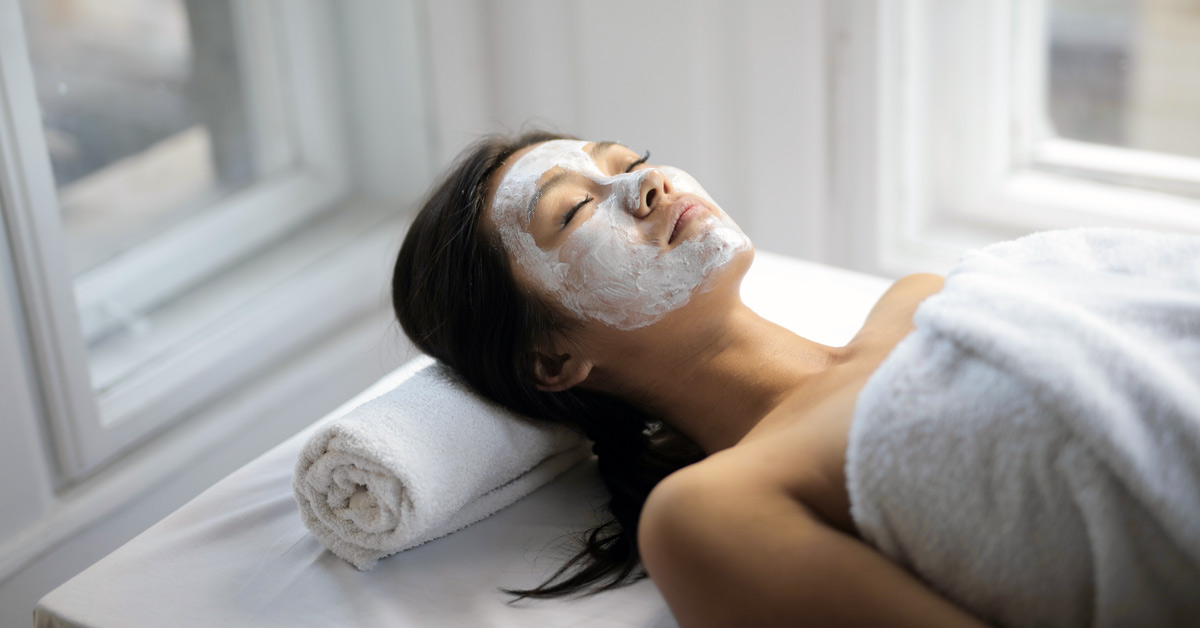What are the key points to consider and take into account in spa cost estimation when preparing a spa opening project for a hotel or individually-run establishment?
Are you considering opening a spa and wondering how much it will cost? Estimating a spa opening cost is an important step for any project owner. Several factors can affect the average cost per square meter, making it crucial to consider each one carefully. In this article, we will explore the key parameters that influence the Spa cost estimation of a spa and provide some insights to help you calculate the investment required.
Factors Affecting the Spa Cost Estimation
When estimating a spa opening cost, various parameters come into play. Let’s take a closer look at the factors that can impact the average cost per square meter:
– Project Size
The size of the spa is a crucial determinant of the overall cost. A larger spa will generally require more materials, equipment, and labor, resulting in higher expenses. Additionally, larger spaces may necessitate additional facilities, such as more treatment rooms or larger relaxation areas, which can further contribute to the cost.
– New Construction or Existing Building
The decision to build a spa as a new construction or retrofit it into an existing building has financial implications. Constructing a spa from scratch allows for more flexibility in design but may involve higher initial costs. On the other hand, repurposing an existing building may require modifications to align with spa requirements, potentially adding expenses for structural changes and adaptations.
– Hotel Category
The category of the hotel establishment in which the spa opening is located can impact the spa cost estimation. Luxury hotels may have higher expectations for spa facilities, leading to more sophisticated design, premium materials, and advanced technology, all of which can increase costs. Conversely, spas in lower category hotels may have simpler designs and fewer high-end features, resulting in reduced expenses.
– Architectural Constraints
When the spa is situated in an old or historical building, architectural constraints come into play. Preserving the building’s historical integrity while integrating spa amenities can be challenging and may require specialized expertise and craftsmanship. These constraints can add costs due to the need for careful restoration, conservation, or adapting existing spaces to meet modern spa requirements.
– Project Location
The location of the spa within the building can affect the spa cost estimation. Different floors or levels may have varying structural requirements, such as reinforced flooring for hydro-massage basins or additional ventilation systems for lower-level spas. These location-specific considerations can impact the overall cost.
– Additional Facilities
Including additional facilities like indoor pools, saunas, or steam rooms can significantly influence the spa opening cost estimation. Each additional feature requires its own construction, equipment, and maintenance, leading to increased expenses. The complexity and size of these facilities will contribute to the overall investment required.
– Equipment and Materials
The choice of equipment and materials used in the spa opening can have a substantial impact on the cost. Opting for high-quality materials, such as premium tiles, luxurious fabrics, or designer furniture, will increase expenses. Similarly, selecting state-of-the-art equipment, advanced technology, or specialized wellness features can add to the overall cost.
– Technology
Integrating technology features into the spa, such as advanced lighting systems, immersive soundscapes, video installations, home automation, or intricate scenography, can enhance the guest experience. However, incorporating these technological elements will involve additional expenses for equipment, wiring, installation, and ongoing maintenance.
It’s important to note that each spa project is unique, and the spa opening cost estimation will depend on the specific requirements, desired level of luxury, market conditions, and other individual factors. Engaging with experienced architects, contractors, and spa consultants can provide valuable insights and a more accurate spa opening cost estimation tailored to your particular project.
Estimating the Investment
Based on these criteria, it is possible to estimate the investment required for a spa opening. The estimation can be divided into two main categories: the dry area (reception, changing rooms, treatment cabins) and the wet area (hydro-massage basin, sauna, steam room, etc.).
The investment estimation includes:
– Second-Fix Works
The second-fix works encompass a range of finishing elements that are crucial for creating a functional and aesthetically pleasing spa environment. Wall, floor, and ceiling coverings play a vital role in setting the atmosphere and style of the spa. The choice of materials, such as tiles, natural stones, or decorative finishes, can significantly impact the overall cost. Plumbing and electrical installations are essential for the proper functioning of the spa, including water supply, drainage, lighting, and power outlets.
Heating, air conditioning, and ventilation systems ensure a comfortable and controlled environment for guests. Joinery, such as cabinetry, doors, and partitions, provides storage solutions and privacy for treatment areas. Tiling and painting add the final touches to create a cohesive and visually appealing space. The cost of these second-fix works will depend on factors such as the size of the spa, the complexity of the design, and the quality of materials chosen.
– Furniture and Linens
Furniture and linens are significant components of the spa investment. The selection of furniture should align with the spa’s concept and desired level of comfort. Massage tables should be sturdy, adjustable, and comfortable for both guests and therapists. Loungers and seating areas should provide relaxation and aesthetic appeal. Decorative objects, such as artwork, plants, or sculptures, can enhance the ambiance and create a welcoming atmosphere. Reception counters and shelves should be functional and visually appealing, reflecting the spa’s branding and style.
Boutique furniture, such as display cabinets or product stands, may be necessary if the spa includes a retail area. Washbasin furniture should be practical and stylish, offering space for storage and essential amenities. Additionally, investing in high-quality towels and linens, along with staff uniforms, contributes to the overall quality and professionalism of the spa experience. The cost of furniture and linens will vary based on the number of treatment rooms, the level of luxury desired, and the quality and brand of the chosen items.
– Equipment
The cost of equipment is a significant consideration in the investment estimation for a spa opening. Essential spa equipment includes saunas, steam rooms, whirlpools, showers, fitness equipment, and hydrotherapy facilities. Saunas and steam rooms provide relaxation and therapeutic benefits, requiring specialized heating systems and materials. Whirlpools and hydrotherapy facilities offer hydro-massage and wellness experiences, necessitating advanced plumbing and electrical installations.
Showers should be designed to provide a refreshing and invigorating experience for guests. Fitness equipment, such as treadmills, stationary bikes, or weights, may be included if the spa offers fitness amenities. The selection of equipment should align with the spa’s offerings and meet the desired level of service. The cost of equipment will depend on factors such as the brand, size, quality, and features of the chosen items. It’s important to consider the maintenance and operational costs associated with the equipment as well.
Examples of structural equipment
- Sauna made of spruce (200 x 200): A sauna made of spruce is a popular choice for its natural and aesthetically pleasing appearance. It typically consists of spruce wood panels, benches, and a heater. The size of the sauna can vary, but a common dimension is 200 x 200 centimeters.
- Tiled steam room (200 x 200): A tiled steam room is a luxurious option that provides a sleek and elegant look. It typically features tiled walls, a steam generator, seating benches, and temperature controls. The dimensions of a tiled steam room can vary, but a common size is 200 x 200 centimeters.
- Acrylic steam room (200 x 200): An acrylic steam room offers a more modern and streamlined design. It is constructed using acrylic panels, which are durable and easy to maintain. The steam generator, seating benches, and temperature controls are integrated into the acrylic structure. Like other steam rooms, the dimensions of an acrylic steam room can vary, but a common size is 200 x 200 centimeters.
- Whirlpool bath (200 x 200): A whirlpool bath, also known as a Jacuzzi or hot tub, provides a relaxing and therapeutic experience. It typically features a jet system that creates swirling water for massage and hydrotherapy. The size of a whirlpool bath can vary, but a common dimension is 200 x 200 centimeters.
- Balneotherapy bathtub: A balneotherapy bathtub is designed specifically for hydrotherapy treatments. It often includes features such as air jets, water jets, and adjustable settings to create a customized bathing experience. Balneotherapy bathtubs come in various sizes and shapes to accommodate different treatment needs.
- Affusion shower: An affusion shower is a specialized shower that delivers a gentle and invigorating water massage. It typically features multiple showerheads positioned at different angles to target specific areas of the body. Affusion showers are commonly used in hydrotherapy treatments and can be customized based on the desired water pressure and temperature.
These examples represent a range of structural equipment commonly found in spas. The specific equipment chosen for a spa opening will depend on factors such as the spa’s concept, target clientele, available space, and budget. It’s important to consult with spa designers, architects, or suppliers to select the most suitable equipment for your spa opening project.
Accessibility Standards
The Americans with Disabilities Act (ADA) sets forth comprehensive standards for accessible design, ensuring that buildings and facilities are physically accessible to people with disabilities. Compliance with ADA standards is essential to prevent the exclusion of individuals with disabilities from accessing spa facilities and services. This includes ensuring program access to all individuals, regardless of their abilities, and providing accessible entry points to swimming pools and spas
Web Content Accessibility Guidelines (WCAG) are also crucial for digital accessibility, ensuring that individuals with disabilities can perceive and operate all content and functional controls on websites. Adhering to WCAG guidelines is essential for ensuring that spa websites and digital interfaces are accessible to all users, including those with disabilities.
Professional spa treatments, such as massage, facials, and body treatments, are likely to be water-based, and spa facilities must comply with local regulations and applicable health and safety requirements to limit the risk of incidents and demonstrate due diligence in case of an incident. This includes ensuring that spa facilities are accessible and safe for individuals with disabilities.
Conclusion
Estimating a spa opening cost requires careful consideration of various factors. By taking into account project size, the nature of the building, hotel category, architectural constraints, project location, additional facilities, materials, technology, furniture and equipment, you can arrive at a reasonable estimation of the investment required.
It is essential to conduct a thorough analysis and consult with experts to ensure accuracy in your spa cost estimation process. With a well-calculated estimate, you can better plan and prepare for the successful opening of your spa.
For more information on Spa Operations and related Spa Opening Cost, we recommend the following resources:
_________________________________________________
Yocale – Spa Management, A Guide for Owners & Managers: https://business.yocale.com/blog/spa-management/
Zenoti – Spa Management: Your Ultimate Guide for Spa Success: https://www.zenoti.com/blogs/spa-management-guide







